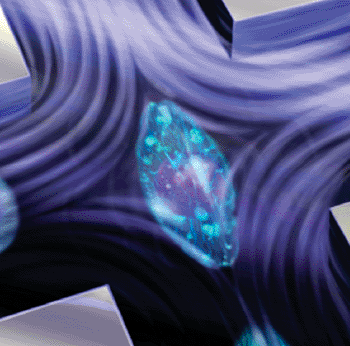New Diagnostic Tool: Identification of Cancer Cells by Deformability Cytometry
By LabMedica International staff writers
Posted on 09 Dec 2013
A system that classifies individual cells according to their structural behavior (mechanophenotyping) has been used to identify cancers in cases that were difficult or impossible to resolve with traditional cytological techniques.Posted on 09 Dec 2013
Investigators at the University of California, Los Angeles (USA) based the development of the "deformability cytometer" on the understanding that cells are not simple sacks of fluid. They also contain viscous and elastic properties related to the membranes that surround them; their internal structural elements, such as organelles; and the packed DNA arrangement in their nuclei. Because variations in these properties can provide information about cells' state of activity and can be indicative of diseases such as cancer, they are important to measure.
The deformability cytometer instrument consists of a miniaturized microfluidic chip that sequentially aligns cells so that they hit a wall of fluid at rates of thousands of cells per second. A specialized camera captures microscopic images of these cells at intervals of 140,000 pictures per second, and these images are then automatically analyzed by custom software to extract information about the cells' physical properties.
In a study, the investigators at the University of California, Los Angeles and colleagues at Harvard University (Boston, MA, USA) used the technique to diagnose malignant pleural effusions, in which disseminated tumor cells are difficult to accurately identify by traditional cytology.
An algorithmic diagnostic scoring system was established on the basis of quantitative features of two-dimensional distributions of single-cell mechanophenotypes from 119 samples. The scoring system classified 63% of the samples into two high-confidence regimes with 100% positive predictive value or 100% negative predictive value, and achieved an area under the curve of 0.86. This performance was suitable for a prescreening role to focus cytopathologist analysis time on a smaller fraction of difficult samples. In addition, samples labeled as “atypical cells,” which require additional time and follow-up, were classified in high-confidence regimes in eight of 15 cases. Further, 10 of 17 cytology-negative samples corresponding to patients with concurrent cancer were correctly classified as malignant or negative, in agreement with six-month outcomes.
"Building off of these results, we are starting studies with many more patients to determine if this could be a cost-effective diagnostic tool and provide even more detailed information about cancer origin," said senior author Dr. Dino Di Carlo, associate professor of bioengineering at the University of California, Los Angeles. "It could help to reduce laboratory workload and accelerate diagnosis, as well as offer doctors a new way to improve clinical decision-making."
The clinical study was published in the November 20, 2013, online edition of the journal Science Translational Medicine.
Related Links:
University of California, Los Angeles
Harvard University
















